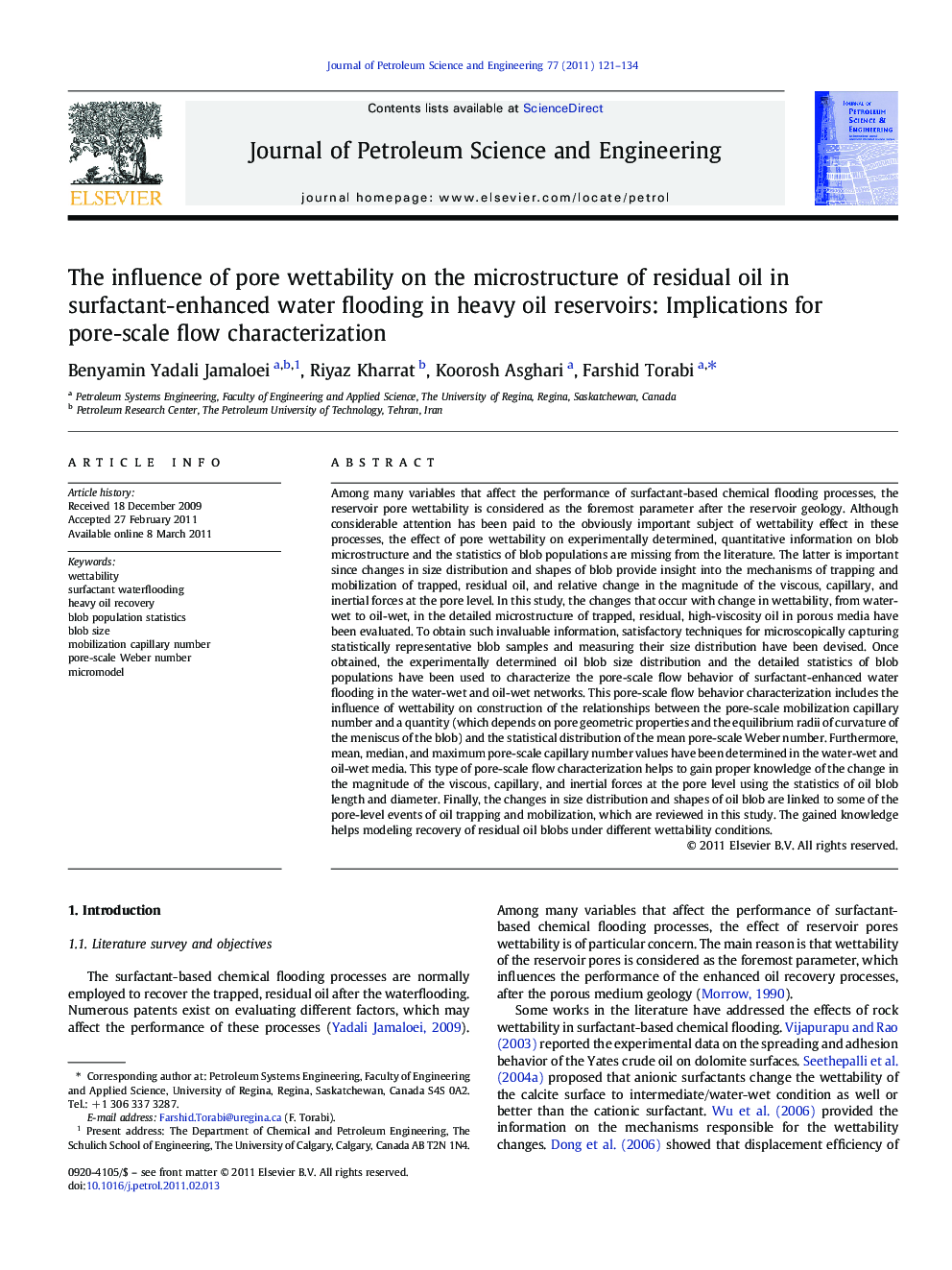| کد مقاله | کد نشریه | سال انتشار | مقاله انگلیسی | نسخه تمام متن |
|---|---|---|---|---|
| 1755742 | 1018909 | 2011 | 14 صفحه PDF | دانلود رایگان |

Among many variables that affect the performance of surfactant-based chemical flooding processes, the reservoir pore wettability is considered as the foremost parameter after the reservoir geology. Although considerable attention has been paid to the obviously important subject of wettability effect in these processes, the effect of pore wettability on experimentally determined, quantitative information on blob microstructure and the statistics of blob populations are missing from the literature. The latter is important since changes in size distribution and shapes of blob provide insight into the mechanisms of trapping and mobilization of trapped, residual oil, and relative change in the magnitude of the viscous, capillary, and inertial forces at the pore level. In this study, the changes that occur with change in wettability, from water-wet to oil-wet, in the detailed microstructure of trapped, residual, high-viscosity oil in porous media have been evaluated. To obtain such invaluable information, satisfactory techniques for microscopically capturing statistically representative blob samples and measuring their size distribution have been devised. Once obtained, the experimentally determined oil blob size distribution and the detailed statistics of blob populations have been used to characterize the pore-scale flow behavior of surfactant-enhanced water flooding in the water-wet and oil-wet networks. This pore-scale flow behavior characterization includes the influence of wettability on construction of the relationships between the pore-scale mobilization capillary number and a quantity (which depends on pore geometric properties and the equilibrium radii of curvature of the meniscus of the blob) and the statistical distribution of the mean pore-scale Weber number. Furthermore, mean, median, and maximum pore-scale capillary number values have been determined in the water-wet and oil-wet media. This type of pore-scale flow characterization helps to gain proper knowledge of the change in the magnitude of the viscous, capillary, and inertial forces at the pore level using the statistics of oil blob length and diameter. Finally, the changes in size distribution and shapes of oil blob are linked to some of the pore-level events of oil trapping and mobilization, which are reviewed in this study. The gained knowledge helps modeling recovery of residual oil blobs under different wettability conditions.
Research Highlights
► Distribution of the oil blob length is noticeably wider in the water-wet model.
► Stringing and elongation of oil blobs create longer blobs in the water-wet model.
► Distribution of the oil blob diameter is wider in the oil-wet model.
► Bridging and steric hindrance create larger-diameter oil blobs in oil-wet model.
► Mobilization of a given heavy oil blob is more favorable in the water-wet model.
Journal: Journal of Petroleum Science and Engineering - Volume 77, Issue 1, April 2011, Pages 121–134